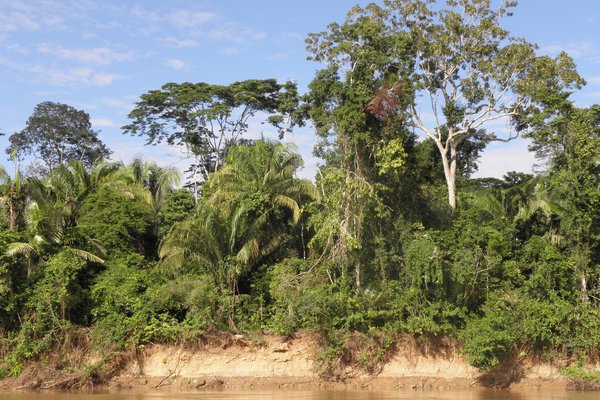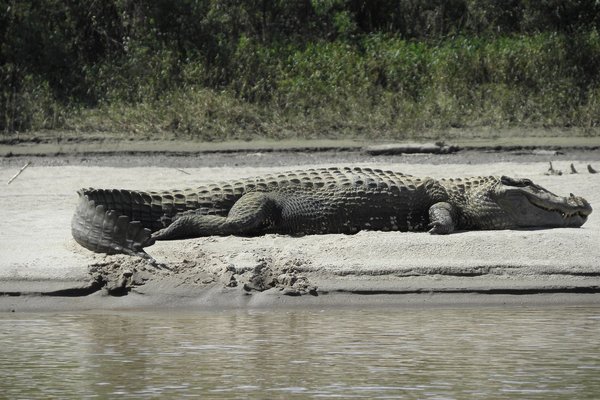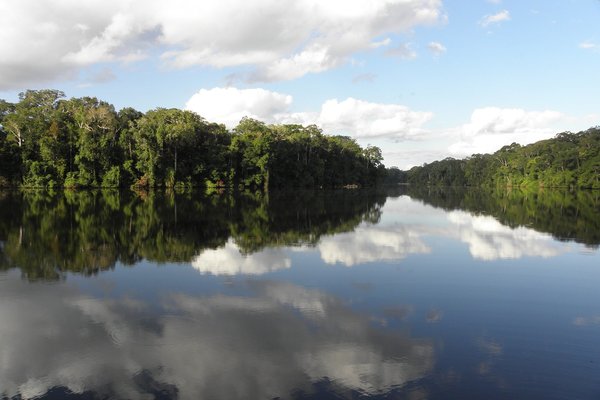Peru
Manu National Park
Manú National Park has a biodiversity that can rarely be found in any other place on Earth.
The isolated park comprises the catchment basin of the Manu River and part of that of the Alto Madre de Dios River. It holds an extremely broad range of ecosystems, resulting in high diversity and a high degree of endemism. Virtually all flora and fauna species are present in abundant numbers: more than 15,000 species of plants are found in Manú, up to 250 varieties of trees have been found in a single hectare and the park is home to over 800 species of birds. Furthermore, it’s a refuge for globally threatened mammal species such as the Giant Otter, Giant Anteater, Ocelot and Jaguar.
Community Perspective: Philipp has explained well the options for visiting; be aware that it takes at least a tour of multiple days. If you can afford it, go for a tour into the Reserved Zone, as described by Els. Memorable will be the enormous variety of trees, plants and monkeys.
Site Info
Official Information
- Full Name
- Manu National Park (ID: 402)
- Country
- Peru
- Status
-
Inscribed 1987
Site history
History of Manu National Park
- 1987: Inscribed
- Inscribed
- Type
- Natural
- Criteria
- ix
- x
Links
- UNESCO
- whc.unesco.org
- Official
-
- peru.travel — Parque Nacional de Manu
All Links
UNESCO.org
- whc.unesco.org — whc.unesco.org/
Official Website
- peru.travel — Parque Nacional de Manu
News Article
- Sept. 25, 2015 telegraph.co.uk — Manu NP tourists held overnight by protesters
- Oct. 30, 2014 news.mongabay.com — 'River wolves' recover in Manu National Park
- Feb. 12, 2013 scoop.co.nz — Secret plans for gas exploration in Manu NP
- Oct. 20, 2011 newswatch.nationalgeographic.com — Near-encounter of tourists with nomadic bands of Mashco-Piro Indians in the area of Manu National Park
- Aug. 22, 2009 worldtravelwatch.com — Gunman Rob Tourists Near Manu National Park
Community Information
- Community Category
- Natural landscape: Forest
Travel Information
Guided Tour Only
Recent Connections
-
Perfect Inscriptions
1987 -
Over 100 mammal species
More than 200 species of mammals (OUV C… -
Rubber
"In 1839, interest in exploring Manú Na…
Connections of Manu National Park
- Individual People
-
-
Tupac Inca Yupanqui
Was beaten by the local Indians in a battle in 1450
-
- Geography
-
-
Andes
The Park lies in the southeastern Peruvian Andes (UNEP-WCMC) -
Amazon Basin
The Manu is a tributary to the 1,347 km long Madre de Dios River, which downriver joins the Madeira River, and ultimately the Amazon River. (wiki)
-
- Ecology
-
-
Oxbow lakes
Lake Salvador and Lake Otorongo -
Turtles and tortoises
Yellow headed side neck turtle
-
Rainforests
-
Otters
-
Orchids
It is claimed that there are 179 species of orchid in the cloud forest (UNEP-WCMC) -
Bears
spectacled bear -
Endemic Bird Species
three Endemic Bird Areas represented within the Park: the South-East Peruvian lowlands, with 15 restricted range species, the Eastern Andean Foothills of Peru, with 11 restricted range species, and the High Peruvian Andes with 30 restricted range species, totalling 56 (UNEP-WCMC) -
Crocodiles
black caiman Melanosuchus niger, common spectacled caiman Caiman crocodilus (UNEP-WCMC) -
Tapirs
Brazilian tapir -
Sloths
brown-throated sloth, two-toed sloth -
Anteaters
giant anteater, silky anteater, southern tamandua -
High-Biodiversity Wilderness Area
Amazonia -
Biological Corridor
part of "Vilcambamba- Amboro Conservation Corridor"See www.cepf.net
-
Jaguar habitat
-
Over 300 bird species
"800 species of birds" (crit x) -
Over 100 mammal species
More than 200 species of mammals (OUV Crit X) -
Cloud forest
-
- Damaged
-
-
Threatened by Oil and Gas Exploration
Potential Threat: "Oil and gas exploration and extraction is occurring south of the site. The Camisea gas field, one of the largest energy projects in Peru, is located in a remote area in the immediate vicinity of the site. Interest in a possible expansion despite National Park and World Heritage Site status has been repeatedly expressed which would carry significant risks to the site and the indigenous populations that inhabit it." (IUCN Outlook 2020)
-
- World Heritage Process
-
-
Perfect Inscriptions
1987 -
Minor modifications after inscription
2009: "rationalize the boundaries of the World Heritage property so that they would coincide with the boundaries of Manu National Park, and not just a portion of it. The area is near the village of Boca Manú and the communities and settlements in the Upper Madre de Dios.""
-
- Human Activity
-
-
Natural sites with indigenous human population
Permanent human habitation is restricted to several small communities of the Matsigenga Amazonian tribal group, largely along the Manú river or one of its main tributaries. -
Rubber
"In 1839, interest in exploring Manú National Park area increased when Charles Goodyear sparked a rubber boom after producing the first heat resistant rubber. His discovery triggered a massive demand for rubber, and rubber trees in Manú National Park region were targeted to meet the need. Another rubber baron Carlos Fitzgerald created the Fitzgerald pass across the Madre de Dios River for rubber transportation. In 1880, about 8000 tons of rubber was exported from Peru and by 1900 exports had climbed to 27,000 tons. Rapid deforestation and competition from South East Asia collapsed the Manú National Park rubber industry in 1914" -
Cacao
The plant Theobroma cacao is found there (unesco website)
-
- WHS on Other Lists
-
-
World Heritage Forest Programme
-
Alliance for Zero Extinction
Bryophryne cophites (a frog species) -
Centres of Plant Diversity
SA37 Eastern slopes of Peruvia Andes & SA11 Lowlands of Manu National Park: Cocha Cashu Biological Station - "Thousands of higher plant species are distributed across the diverse ecosystems, habitats and niches. Hundreds of tree species have been identified, often jointly growing within very small areas." -
World Biosphere Reserves
Manu (1977) -
WWF Global 200
Terrestrial, Tropical and Subtropical Moist Broadleaf Forests: (47) Southwestern Amazonian Moist Forests (subregion Southwest Amazon moist forests)See web.archive.org
-
- Visiting conditions
-
-
Guided Tour Only
Manu NP can (only) be reached by joining a tour from Cusco.
-
- WHS Names
-
-
Named after a River
"The Manú is a river in southeastern Peru. It runs down the eastern slopes of the Andes Mountains into the Amazon Basin. It runs through what is now protected as the Manú NP..... is a tributary to the Madre de Dios River, which downriver joins the Madeira River, and ultimately the Amazon River."
-
News
- telegraph.co.uk 09/25/2015
- Manu NP tourists held overnight by…
- news.mongabay.com 10/30/2014
- 'River wolves' recover in Manu Nat…
- scoop.co.nz 02/12/2013
- Secret plans for gas exploration i…
Recent Visitors
Visitors of Manu National Park
- Bamse
- Chinmaya
- Daniel Gabi
- dave wood
- David Marton
- Els Slots
- emvcaest
- Frederik Dawson
- Geert Luiken
- Iain Jackson
- Jarek Pokrzywnicki
- Joyce van Soest
- KarenBMoore
- KeithBailey
- Kurt Lauer
- Little Lauren Travels
- Loic Pedras
- Marlies van Wolfswinkel
- Mathijs
- MMM
- Palimpsesto
- Philipp Peterer
- Randi Thomsen
- Samy G
- Sandra!
- Svein Elias
- Timonator
- Timothy C Easton
- Tinuszke
- Waxwing
- Wojciech Fedoruk
- Zoë Sheng
Community Reviews
Show full reviews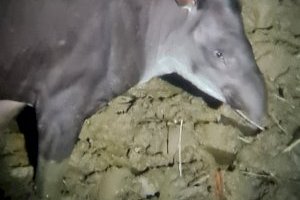
I visited the reserved zone of Manu for 2 days and the trip from Cusco included in total 7 days/ 6 nights. The programme of most tour operators is similar so there is no need to describe it in detail here. You can just check the websites. We drove by transporter from Cusco to Atalaya and then by boat up to Casa Matchiguenka which is one of few of the current lodging options in the real WHS part/ core zone. We booked with Bonanza tours and the tour was operated by Amazon Wildlife Experience which is run by the brother of the owner of Bonanza. So it was the same as with Bonanza only that they laid acquired customers together. We were 8 tourists, one guide, one cook and either a driver or a captain and his boat assistant. The real price was 1290 USD p.P. but as we went to the office in Calle Suecia in Cusco end of August and were flexible and negotiated we could book the same tour for the 14th of September for 750 USD p.P.. Some in our group booked only 6 days and there was not much difference. You don´t miss out on anything only that after a long day you drive all the way back to Cusco instead of staying another night close to Atalaya port and some more bird and monkey watching in the cloud forest. Also a good option to save money. Maybe good to mention that we almost had …
Keep reading 0 comments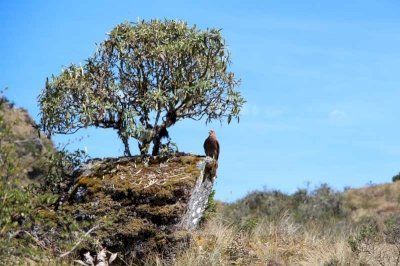
Visit: June 2019. Manu NP can (only) be reached by joining a tour from Cusco. I went on a 5 days tour to the Cultural Zone and focus on the different tours.
Zona Cultural vs Zona Reservada
Manu NP is huge, but only a relatively small part can be accessed. If you want to spend your tour mostly in the core zone, you need to book a trip to the reserved zone. The shortest tour I found was 6 days. The 5 days reserved zone tour Els did is no longer offered, as it was not profitable. Tours to the reserved zone include on each way an 8 hours bus ride to Atalaya port (half of the road unpaved) followed by an 8 hours boat ride to Boca a Manu, the entry point to the reserved zone. The flights to Boca a Manu are no longer available since 2012, so no short cuts possible at the moment. This also means that out of 6 days you will be using 3 just to get there and back. From what I heard animal sightings in the reserved zone are far more common. There are lodges inside the reserved zone, so you don’t have to sleep in a tent.
The cultural zone can be done in 3, 4 or 5 days tours. Driving from Cusco to Atalaya you will actually cross the core zone several times at the south western tip of the park (from where my picture is). This …
Keep reading 0 comments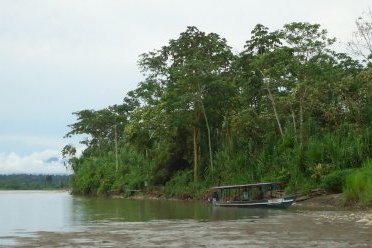
Only a 3 days trip organized from Cuzco through Manu Peru Amazon (November 2013). Not enough to see the real jungle but least enough to have impression how it is in Amazonia.
Road from Cuzco to Salvacion (via Paucartambo) crosses National Park borders at Acjanaco (there are signs of NP) and than continues to Pilcopata (and Salvacion) within so-called Cultural Zone of Manu (Zona de Amortiguamiento).
Even being aware of the lenghth of stay it is one of best jungle experience so far - variety (and diversity) of animals and plants to be observed there is enormous, I truelly recommend to go there for longer period (and probaly go further north to Manu River and so-called Zona Experimental).
Keep reading 0 comments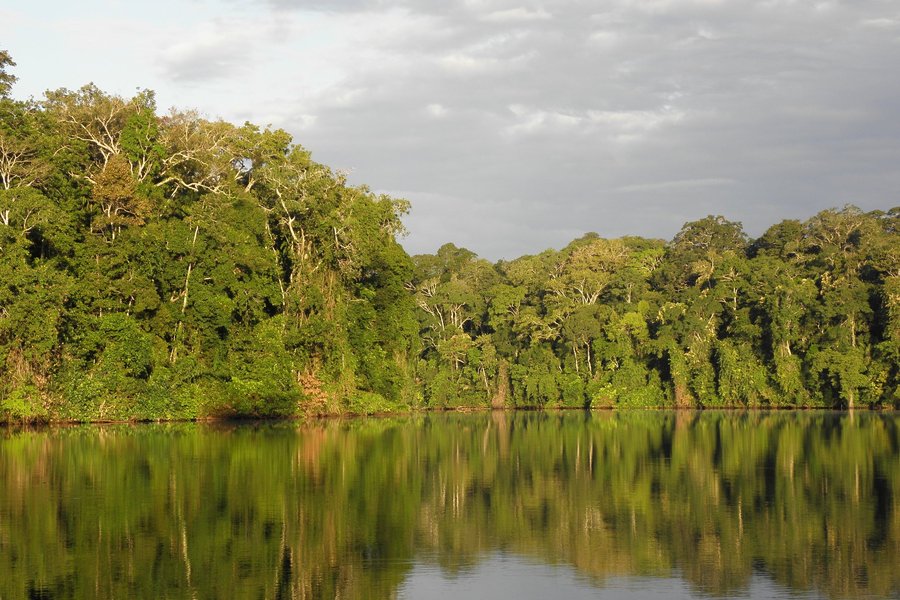
I have been in the Manu National Park and must say is for sure one of the best places in the world to be visited. Due to the non easy access way, nature there remainded more untouched than in others Amazon reservations, that is mainly the reason why is easier to spot mammals and birds. Insekts species we saw there are unbeliveble, those that somebody could not imagine that exist.
Our guide was so knowledge and patience showing us useful plants, vines and teaching us how to live in the Amazon, we made fire and we bath us in beutiful rivers every day.
I stay volunteering on a campsite, helping to develope a project that protect the Cultural Zone of the Manu National Park, during this month I learnt a lot and I would never forget this experience.
For those interested you can visit the web page:
www.manuperuamazon.com
They offer affordable options to visit the Park
Keep reading 0 comments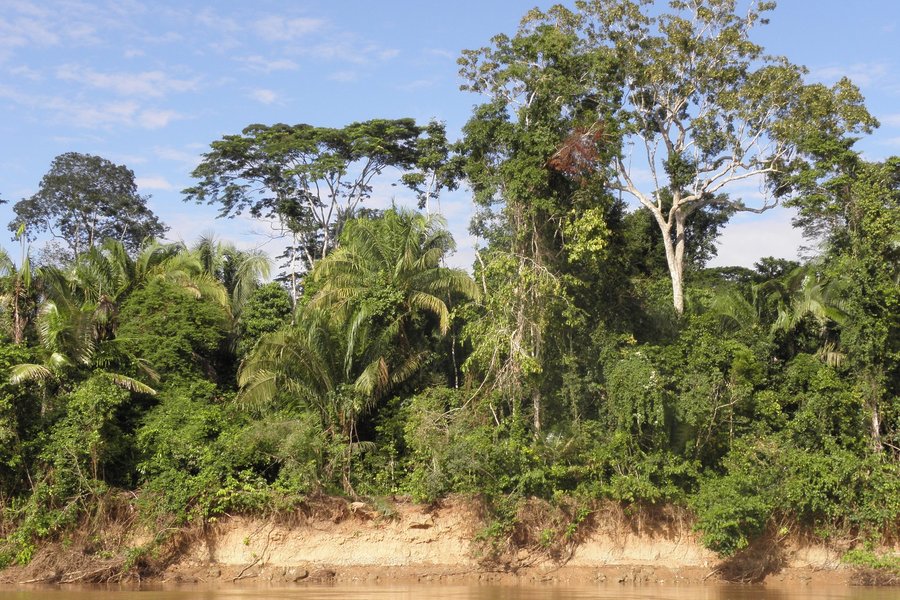
I am the first to write a review about this WHS - no wonder, since it sees only ca. 2500 visitors a year. The Reserved Zone of Manu National Park can be reached from Cuzco with a couple of tour companies. I went there on a 5-day tour with the well-organized and recommended Pantiacolla Tours. It is possible to fly in and out (there´s a tiny grass airstrip at the Yuni Lodge), but I chose to drive down from Cuzco for 1.5 days through the cloud forest until the port of Atalaya at the Madre de Dios River. This way you´ll see the landscape change dramatically, and there are already plenty of birds to see along the road, including the Andean cock-of-the-rock and the quetzal.
The tour company had put "binoculars" at the no. 1 spot on the packing list. And indeed they proved to be essential, as the wildlife here is not easy to see with the naked eye. The rainforest is very thick, and many of the species have disguising colours.
We navigated the Manu River for hours, always being the only ones on the river. Both white and black caiman are a common sight here, lying around at the river's characteristic beaches. We saw one black caiman about 4 meters long. Also, we happened upon two tapirs scrambling upon the river bank. Tapir is a rare sighting, even scarcer than the jaguar. Unfortunately, we missed out on the latter one during this trip.
On short hikes through …
Keep reading 0 comments
